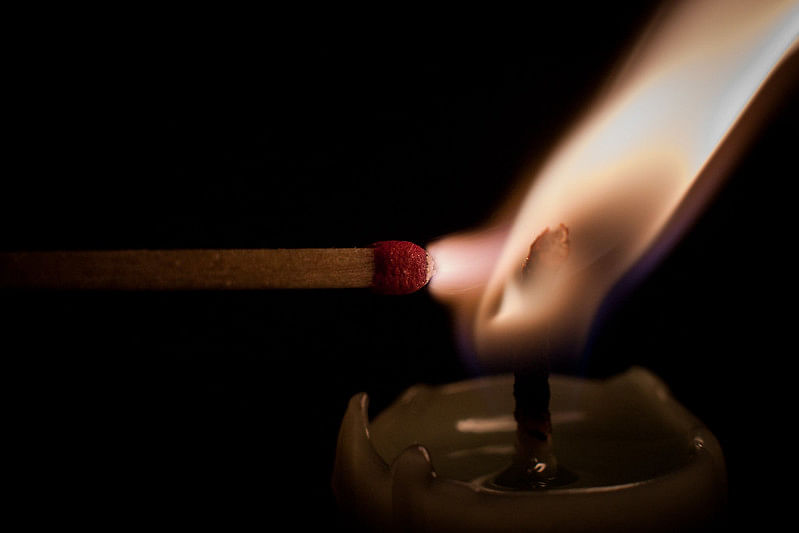Is Flash Paper Dangerous?
Flash Paper is one of the best ways to add a visual burst of excitement to any magic trick. But, since it also uses a variety of highly flammable chemicals, is Flash Paper dangerous?

What is Flash Paper Made Of?
Before we examine the dangers of flash paper, we must first understand what it is.
Flash Paper is actually the theatrical name given to a form of nitrocellulose made from paper, cotton or tissue treated with nitric acid. When it comes in contact with a lighter, match or any other extreme heat source, flash paper burns instantly with a brilliant “flash” that leaves behind no smoke or ash. As a result, Flash Paper is often used by magicians for a variety of productions, vanishes, transformations and other magic tricks.
What is Nitrocellulose?
Nitrocellulose is a highly flammable chemical compound created by exposing cellulose to a powerful nitrating agent like nitric acid or a mixture of nitric acid and another acid such as hydrochloric acid or sulfuric acid.
This compound was believed to be discovered in the early 19th century when French Chemist Henri Braconnot found that combining nitric acid with wood or starch fibers created a lightweight combustible material. However, this substance, along with other similar findings from Théophile-Jules Pelouze and Jean-Baptiste Dumas, proved to be unstable and impractical explosives.
A practical formulation of Nitrocellulose didn’t come around until 1846 when German-Swiss Chemist Christian Friedrich Schönbein accidentally spilled a mixture of nitric acid and sulfuric acid on his kitchen table. He quickly grabbed the nearest cloth, wiped up the mess and then hung it on the stove door to dry. This cloth, which was actually a cotton apron, was ignited by the heat of the stove after it dried. Thus, laying the framework for modern day flash paper or flash cotton.

What is Flash Paper Used For?
When it was first developed, Flash Paper (or nitrocellulose) was generally used as a replacement for gunpowder and low-order explosives known as Guncotton. Partially nitrated cellulose is also believed to have “sparked” (pun intended) the creation of the first man-made plastic which was used by Kodak, and other major suppliers, in the late 1800’s as a film base for photography, x-rays and movies known as “nitrate film”.
Today, nitrocellulose is most commonly used in magician's Flash Paper to add amazingly visual theater effects to magic shows.

Is Flash Paper Safe To Use?
When safely used in a controlled environment with no other flammable objects in close proximity, Flash Paper can be an easy way to up the “wow factor” of any magic trick.
However, as with any fire product, there is always the potential of danger when using Flash Paper. Especially when you consider that the age or dryness of a piece of Flash Paper, how it was stored, or how much you use, has a significant impact on how it burns.
Flash Paper should NEVER be used by anyone under the age of 18. Before performing with it in your magic show, we strongly recommend buying a large batch and safely igniting all of it until you are completely comfortable with how quickly the paper burns. You should also always keep a fire extinguisher nearby. And remember, some people have sadly died as a result of Flash Paper, so please be careful.
Can I Travel With Flash Paper?
As Flash Paper is a hazardous material that is often listed on the dangerous goods list for many forms of transportation such as planes or trains, it is not advised to travel with it unless you are driving yourself in your own car. If you do transport it, make sure it is stored wet in a sealed container or bag. An even safer alternative used by many magicians is to purchase Flash Paper ahead of time and have it shipped to the location of their event.

